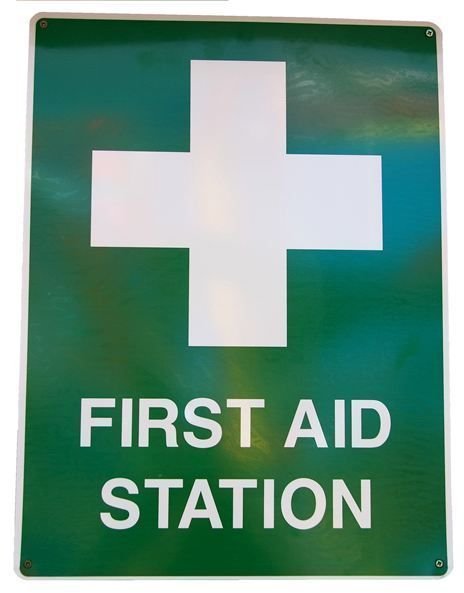Preventing and Reducing Causes of Workplace Accidents
There are numerous preventable causes of workplace accidents, which cost Americans more than $650 billion annually, according to 2008 figures produced by the National Safety Council. The Department of Labor indicates, as recent as 2010, that there are on average 3.6 workplace injuries per 100 employees every year. Those numbers are too high for the comfort of most companies because this can cost time, money and productivity. It has been proven, however, that by having an established policy on preventing workplace accidents and continual staff training, accidents can be minimized – significantly reducing costs to employers. Read on to learn about some common causes of workplace accidents and how they can be prevented in the first place.
Employee Carelessness in the Workplace
One of the leading causes of workplace accidents is directly attributed to employee behavior on the job. Workers who do not follow instructions, don’t use proper safety protection, and those who act foolishly while engaged in work are much more likely to cause accidents at work. It’s important that employees are continually monitored by supervisors while on the job and corrective measures are taken when this type of behavior is observed. Horseplay at work should never be tolerated, especially from the management level. Additionally, all employees should be regularly educated about safety measures they can take to prevent injury.
Hazardous Chemicals at Work
Another possible cause of preventable accidents in the workplace is the storage and use of hazardous chemicals. This can range from general office supplies to industrial chemicals. Fortunately, the Occupational Health and Safety Administration (OSHA) and the Environmental Protection Agency (EPA) have put together a comprehensive chemical safety program to help employers take precautions when it comes to chemicals at work. Be sure to let employees know where to find the OSHA chemical database, how to read labels on any and all chemicals, and use them the right way. Chemicals, especially stronger industrial types, should be stored appropriately to avoid injuries to people and property.
Defective Employee Equipment
When it comes to most job sites, there are specific types of equipment and machinery that will be used on a regular basis by employees. It’s critical to train employees how to use equipment to perform routine work, but it’s even more important to maintain that equipment for safe operation. Routinely, it’s a good idea to inspect all equipment and machinery, including vehicles driven by employees, for signs of wear and tear, damage and misuse. Remove any potential threats to employee safety and either repair or replace them immediately to prevent many causes of employee accidents.
Repetitive Motions at Work
In many workplaces, employees are subjected to repetitive motions which can cause injuries over time; for example: neck and back strain or carpal tunnel syndrome. The most common of these are related to sitting, standing, or using limbs for long shifts or without adequate support. To prevent workplace accidents caused by repetitive motion, make the workplace as ergonomic as possible by adding supportive floor mats, chairs that adjust to each user, and desktops that support the hands and wrists at computer stations. Give employees breaks throughout the day to allow them time to recuperate. By making subtle changes, most workplace injuries caused by repetitive motion can be prevented and reduced.
Rotating Swing Work Shifts
Another common cause of workplace accidents is poor sleeping habits as a result of swing shifts. There is a correlation between workers who regularly miss hours of sleep due to working swing shifts or back-to-back shifts on the job. A team of prominent medical researchers compared data from the Statistics Canada’s Survey of Labour and Income Dynamics for the period of 1996 to 2006, and found that men and women working night or rotating shifts had a higher rate of experiencing workplace injury than those working standard day shifts. In order to cut down on the number of accidents in the workplace, switching to regular shifts can help.
Insufficient Training and Supervision
Indentifying the causes of workplace accidents also means training and supervising employees at work on a continual basis. Many workers are injured because they do not receive adequate training or supervision. Without this training, an environment of safety cannot be developed and employees are left to their own devices. Oftentimes, this can lead to undertrained employees who are asked to perform duties for which they are not qualified or prepared to handle. This alone can lead to serious injuries to workers and property. To prevent workplace accidents, take time to develop a clear plan for training all employees from day one, and foster safety as a corporate initiative by encouraging managers to supervise and re-train employees whenever possible at workplace safety meetings.
Sources and Photo Credit
Sources
https://www.nsc.org/Pages/USCongressDesignatesJune2008asNationalSafetyMonth.aspx
https://www.bls.gov/news.release/osh.nr0.htm
https://www.osha.gov/web/dep/chemicaldata/
https://www.sjweh.fi/show_abstract.php?abstract_id=3124
Photo Credit
Image used with permission from https://www.morguefile.com/archive/display/688098
